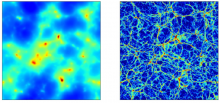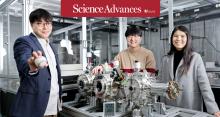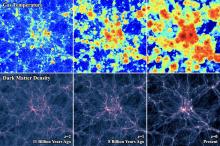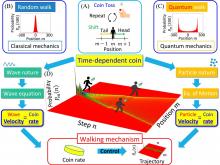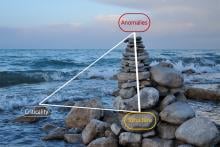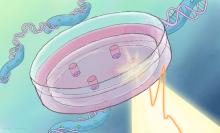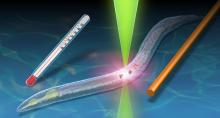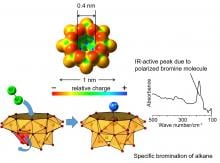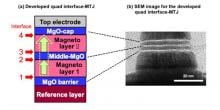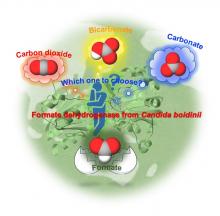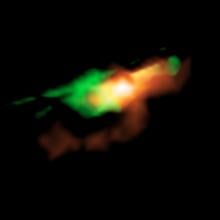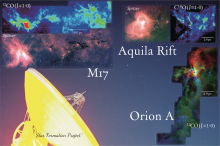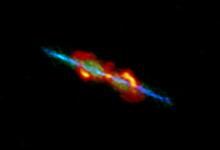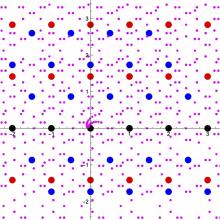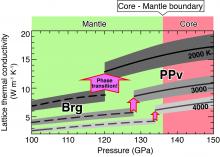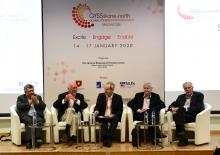Physics
News
25 Nov 2020
Materials that convert mechanical into electrical or magnetic energy could open the door to a future of wearable and structure-integrated virus sensors.
19 Nov 2020
A research team, affiliated with South Korea's Ulsan National Institute of Science and Technology (UNIST) has discovered that when the rotational quantum states of non-polar molecules change under the influence of laser fields (non-resonant laser fields), so does their motion trajectories.
13 Nov 2020
How hot is the Universe today? How hot was it before? A new study by an international team of researchers, including members of the Kavli Institute for the Physics and Mathematics of the Universe (Kavli IPMU), suggests that the mean temperature of gas in large structures of the Universe has increased about 3 times in the last 8 billion years, to reach about two million Kelvin today.
30 Oct 2020
A research team based in Japan may be moving toward a more controlled walk by unveiling the mechanism underlying the directional decision of each quantum step and introducing a way to potentially control the direction of movement.
29 Oct 2020
Scientists at The University of Tokyo use a two-state model based on the formation of tetrahedral structures to explain water’s anomalous properties and the surprising liquid–liquid transition of water.
29 Oct 2020
Tohoku University researchers have revealed more details about omnidirectional photoluminescence (ODPL) spectroscopy - a method for probing semiconducting crystals with light to detect defects and impurities.
03 Oct 2020
A new apparatus improves how we study the effects of aiming high-field terahertz radiation at cells, with implications for regenerative medicine.
16 Sep 2020
Professor Hyeon K. Park, affiliated with South Korea's Ulsan National Institute of Science and Technology (UNIST) has been selected, as the 7th Laureate of S. Chandrasekhar Prize of Plasma Physics.
11 Sep 2020
Measuring the temperature of objects at a nanometer-scale has been a long challenge, especially in living biological samples, because of the lack of precise and reliable nanothermometers. An international team of researchers has realized a quantum technology to probe temperature on a nanometer-scale, and have observed a ‘fever’ in tiny nematode worms under pharmacological treatment. This strengthens the connection between quantum sensing and biology and ushers in novel thermal imaging technologies in biomedical research.

11 Aug 2020
In the era of smart cities and amid the global outbreak of Covid-19, connecting through the internet is getting more important than ever. Researchers have been working day and night on advancing the optical data transmission network to address the demand for faster transmission speed. An international research team has developed a new technology that is equipped with a special chip made by a scientist from City University of Hong Kong (CityU). The team broke the spectral efficiency world record for optical data transmission with a single integrated photonic chip. This allows the transmission speed as fast as downloading 1,000 high-definition movies in less than a second!

06 Aug 2020
Understanding the microscopic origin of different physical properties of solids is of fundamental importance for condensed-matter physics and for materials applications. Yet, there is still a lot of unknowns in amorphous materials due to their disordered atomic structure. Recently, with the state-of-the-art neutron scattering instrumentation and molecular dynamic simulations, an international research team, led by physicists from City University of Hong Kong (CityU), has demonstrated the existence of high-frequency transverse phonons in metallic glass for the first time. Their findings also suggest that the atomic structure correlates with its atomic dynamics, providing new insight for understanding the atomic structure-dynamics relationship in disordered materials.
05 Aug 2020
Research at Kanazawa University as reported in Scientific Reports demonstrates atomic force microscopy imaging that gets around the challenges of exciting very small cantilevers at their high megahertz resonance frequencies. The approach accomadates wide frequency bandwiths, and is applicable for photosensitive materials in a wide range of liquids.
13 Jul 2020
A hemispherical vanadium oxide cluster has a cavity that can accommodate a bromine molecule. It was found that a bromine molecule trapped in the cavity was polarized and that an alkane molecule like pentane, butane and propane could be brominated with the bromine molecule in the cavity with a selectivity differing from ordinary bromination. The present findings are expected to be useful for polarization of small molecules and design of highly functional catalysts.
17 Jun 2020
Professor Tetsuo Endoh, leading a group of researchers at Tohoku University, has announced the development of an MTJ (Magnetic Tunnel Junction) with 10 ns high-speed write operation, sufficient endurance (>10<sup>11</sup>), and with highly reliable data retention over 10 years at 1X nm size. Realizing a 1X nm STT-MRAM (Spin Transfer Torque-Magnetoresistive Random Access Memory) and NV(Non-Volatile)-Logic has wide application to a variety of fields.
11 Jun 2020
We move our eyes several times per second. These fast eye movements, called saccades, create large image shifts on the retina - making our visual system work hard to maintain a stable perceptual world. Remapping the retinal image compensates for this; however, errors in actual eye movements cause image shifts, even with remapping.
19 May 2020
Scientists from Hong Kong Baptist University (HKBU) have developed a novel technique that can produce pure therapeutic drugs without the associated side effects.
15 May 2020
The group clarified for the first time whether formate dehydrogenase reduces carbon dioxide, biocarbonate ion, or carbonate ion to formic acid.
Points to a catalyst in developing and designing an artificial photosynthesis system that efficiently converts carbon dioxide into organic molecules.
13 May 2020
There is currently a strong demand to replace organic liquid electrolytes used in conventional rechargeable batteries, with solid-state ionic conductors which will enable the batteries to be safer and have higher energy density.
30 Apr 2020
A multinational team of researchers from Tohoku University and institutions in the UK, Germany and Switzerland has revealed the magnetic states of nanoscale gyroids, 3D chiral network-like nanostructures. The findings add a new candidate system for research into unconventional information processing and emergent phenomena relevant to spintronics.
27 Mar 2020
Astronomers obtained the first resolved image of disturbed gaseous clouds in a galaxy 11 billion light-years away by using ALMA.
24 Mar 2020
Astronomers have captured new, detailed maps of three nearby interstellar gas clouds containing regions of ongoing high-mass star formation.
09 Mar 2020
Researchers found that dust encircling a young gas giant can create a “safety zone,” which keeps a large moon from falling into the planet as the system evolves.
05 Mar 2020
An international team of astronomers using ALMA has captured the very moment when an old star first starts to alter its environment.
02 Mar 2020
A physicist and mathematician have found a string theory link in a class of complex numbers.
14 Feb 2020
Planetary scientists using ALMA revealed the secrets of the atmosphere of Titan, the largest moon of Saturn.
13 Feb 2020
Lattice thermal conductivities of MgSiO3 bridgmanite and postperovskite (PPv) phases under the Earth’s deepest mantle conditions were determined by quantum mechanical computer simulations. We found a substantial increase in the conductivity associated with the phase change. This indicates that the PPv phase boundary is the boundary not only of the mineralogy but also the thermal conductivity. The effect of anisotropy on the conductivity of PPv in the heat transport properties at the lowermost mantle was also found to be minor.
07 Feb 2020
A research team from the Centre for Genomic Studies on Plant-Environment Interaction for Sustainable Agriculture and Food Security recently found that some non-coding RNA can produce very short proteins (small peptides), which play an important role in regulating organismal development and stress resistances. The findings challenge the very definition of non-coding RNAs and may open a new research path for future drug and crop improvement. The research article has been published in the journal Plant Physiology. (See note)
04 Feb 2020
Pressing issues in science and technology, including in healthcare and climate change, took centre-stage at the recent Global Young Scientists Summit 2020 where eminent scientists and talented young researchers worldwide convened in Singapore.
Events
Sorry, nothing coming up for this discipline
Researchers
Sorry, nothing coming up for this discipline
Giants in history
Sorry, nothing coming up for this discipline


